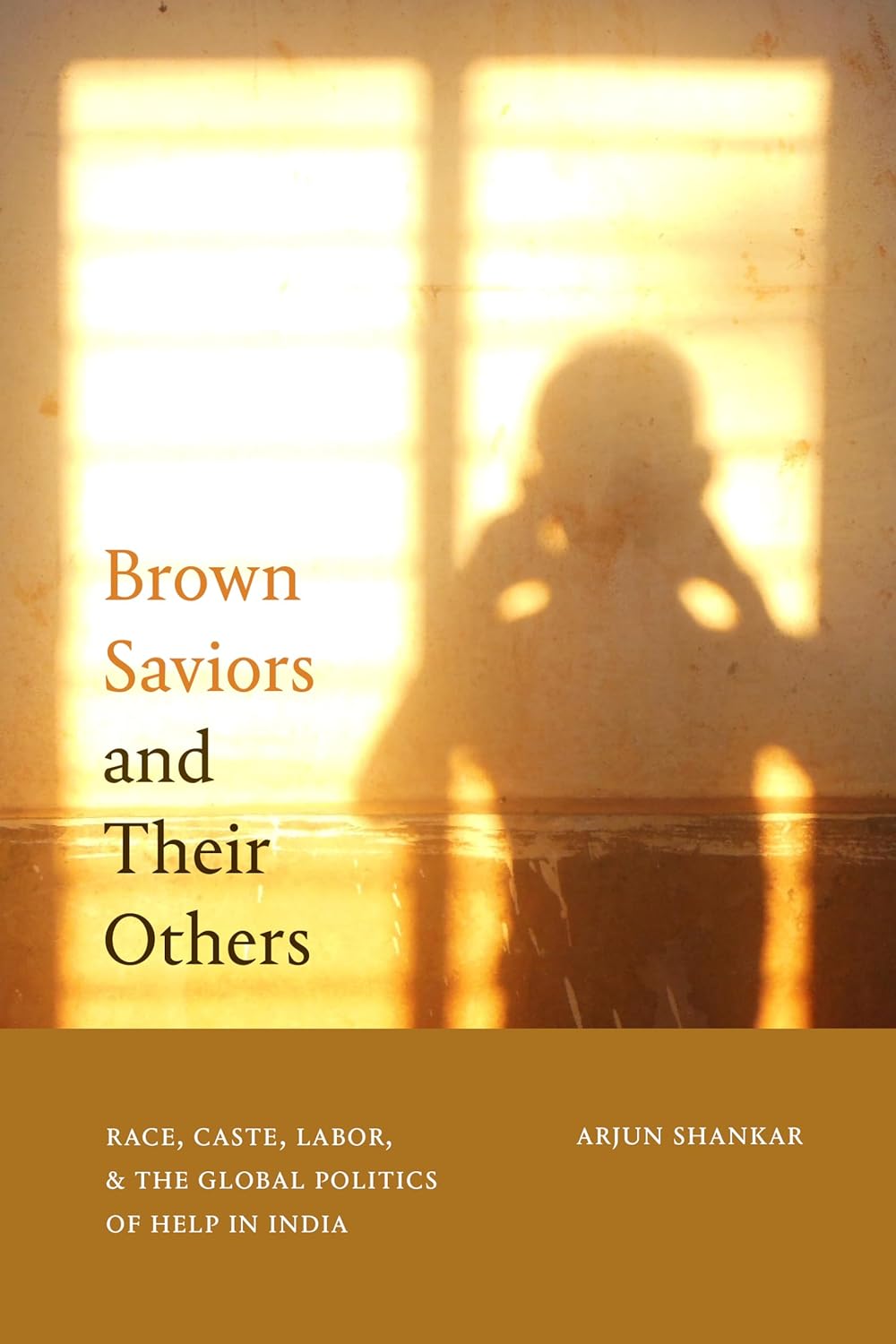
Brown Saviors and Their Others: Race, Caste, Labor, and the Global Politics of Help in India by Arjun Shankar (published by Duke University Press in 2023) is an interdisciplinary ethnographic exploration of help economies or the nonprofit industrial complex in the postcolonial developing world through the trajectory of Sahaayaka, an education NGO located in rural Karnataka. The book opens with two premises revealing contradictions in today’s global development discourse. Firstly, the ‘help rhetoric’ undermining the agency of objects or those being helped is unravelled. Here, he introduces ‘brown saviours’, the crux of the book, whose identity, situatedness, locationality, and labour superstructure are deconstructed through multiple theoretical perspectives in the following four sections. The author unearths disturbing methodological presuppositions using ‘nervous ethnography,’ expressing the researcher’s privileged yet paradoxical standpoint, as the distinction between the subject and objects of the study often gets blurred in collaborative research.
In the first section, integrating personal and macro-analyses, Shankar identifies the brown saviour (even within himself) as a complex identity shaped by the colonial oppression trauma intertwined with the masked privilege of accumulated capital – savarna, dominant caste, upper class, transnational, modern masculine technocrats, accruing social and economic value from marginalized people of the developing world. Though the racialized affective geography of brownness is vast, the book’s scope is limited to the savarna Indian-American diaspora leading Sahaayaka located in Bangalore’s peripheries, characterized by low education, dying agricultural economy, and farmer suicides.
The ‘cream’ of Shankar’s work, racial capitalism camouflaged in help economies, unfolds in the second section. Highlighting the absence of discussions on race and caste intersectionality in India, the author reveals how white civilizing ideologies have normalized saviours and labour gradation based on ethnic bodily capacities in the savarna elites’ minds, to whom the power was transferred post-independence. This neocolonial psyche reinforcing hierarchy is exemplified through Sahaayaka’s cosmopolitan Brahmin founders’ actions, imposing caring labour on lower caste school mentors, and then celebrating it as fulfilling social obligations without expecting financial incentivization. Interestingly, Shankar challenges the brown saviour’s self-perception as liberal and against Hindu supremacist ideas embodying contemporary Indian politics. He unveils their ethnocentric tendencies by demonstrating the exclusion of Muslim-dominated regions and schools from Sahaayaka’s development agenda and the recruitment of only Hindu, Kannada-speaking mentors. By doing so, the author fills the lack of theoretical engagement on the binary of saviour/saved, examining caste-race interlinkages in India. Moreover, he exposes the interplay of gender in racial capitalism – the irony of socially elite women attempting to uplift women from marginalized communities without challenging hetero-patriarchal social reproduction.
The third section focuses on the territoriality of brown saviourism, where postcolonial cities like Bangalore act as nodes of global capital flows and operational headquarters of the decision-makers in Sahaayaka while villages lose out from urban-centric economic growth. Here, the rural-urban interface indicates the conflation of paternalistic global and national development, creating aspirational illusions for the surplus rural labour force who seek upward mobility through NGO work, imbibing saviourism. By referring to elitist symbols like AC cars and table tennis associated with Sahaayaka school visits and infrastructure, Shankar criticizes the policymakers and funders who address social issues without firsthand experience, resulting in superficial solutions and hyperreal goals. He advocates that success should be measured in terms of marginalized communities’ needs fulfilment rather than by urban elites’ standards.
Digital Saviourism constitutes the last section, which reflects on the narrative of digital panacea, marketed as transcending human inadequacies. Shankar contends that time manipulation is a central tenet of accumulation, placing the redressal of structural issues concerning gender, race, caste, and capital always suspended in time yet to come. Targeting scalability, Sahaayaka students were reduced into metrics, invisibilizing the impact of social stratification on their performance. The author asserts how digital infrastructure creators espouse governmentality and anti-relational relationality because savarna technocrats incorporate those with less techno-cognitive abilities, including students, mentors, and bureaucrats, into their surveillance apparatus. He argues that datafication fails to capture mentors’ emotional rapport with beneficiaries, which remains undervalued.
In conclusion, Shankar contemplates how Brown saviourism hinders solidarity via binaristic thinking and possesses the potential to aid ethnic cleansing projects. He urges the readers, particularly students, to embrace discomfort and be radically nervous while addressing systemic issues and ingrained categorizations creating Others. He ends with more questions than answers in tackling the coloniality of the help economy, prompting academia to continue the dialogue and critically reflect on producing equitable research.
The book’s notable strengths include longitudinal, multimodal, and intersectional research alongside structural rigour and critical pedagogical quality, with arguments craftily progressing from personal to grand narratives. Each chapter begins with a fieldwork anecdote representing various stakeholders and ends with relevant theoretical musings and experiences linking the next chapter. Susceptible to single author’s biases, Shankar lists his sources and background transparently. Summing up, Brown Saviours and Their Others: Race, Caste, Labor, And The Global Politics Of Help In India pioneers the literature on racial capitalism in India as an analytical category when critiquing nonprofit development discourses.
***
Shradha Nediyedath is a final year student of the integrated MA program in Development Studies at Indian Institute of Technology (IIT) Madras.
